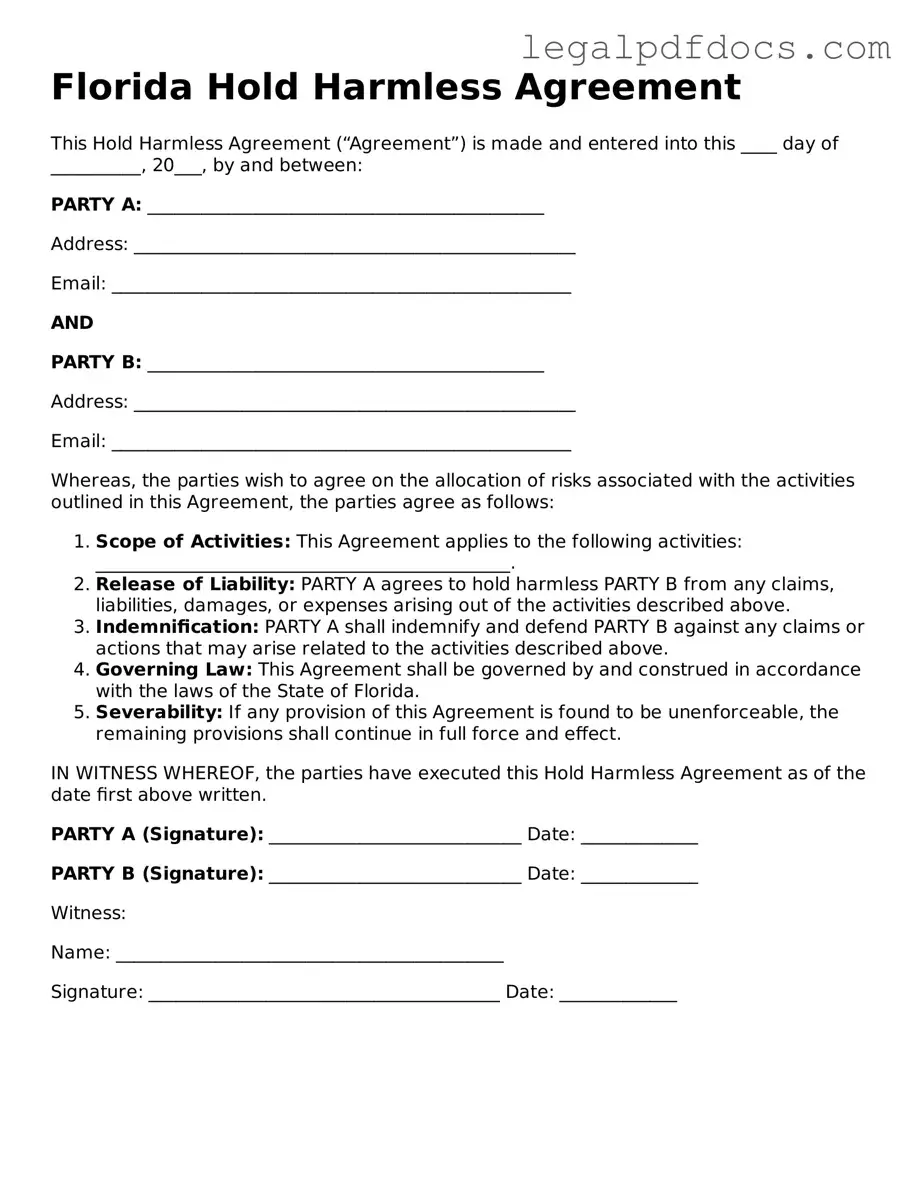In the vibrant landscape of Florida's real estate and business transactions, the Hold Harmless Agreement form plays a crucial role in protecting parties from potential legal liabilities. This form is commonly used in various situations, such as when one party agrees to take responsibility for any damages or injuries that may arise during a specific event or activity. By signing this agreement, individuals or businesses can safeguard themselves from claims or lawsuits that could stem from accidents or unforeseen incidents. The essence of the Hold Harmless Agreement lies in its ability to clearly outline the responsibilities of each party involved, ensuring that everyone understands their rights and obligations. Whether you're a property owner, a contractor, or an event organizer, having a solid grasp of this form can help you navigate the complexities of liability and risk management in Florida. Understanding its key components, such as indemnification clauses and the scope of coverage, is essential for anyone looking to mitigate their exposure to potential legal issues.
